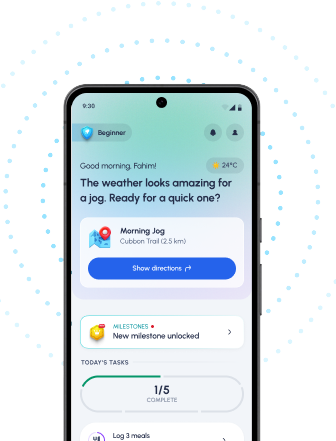Table of Contents
- Blenderized Tube Feeding: Benefits for Diabetes?
- Impact of Blenderized Feeds on Gut Microbiome
- Optimizing Nutrition via Blenderized Tube Feeding
- Blenderized vs. Standard Tube Feeding for Diabetes
- A Guide to Blenderized Tube Feeding and Diabetes Management
- Frequently Asked Questions
- References
Managing diabetes is a complex journey, and what you eat plays a crucial role in your overall health. For individuals requiring tube feeding, ensuring adequate nutrition and minimizing negative impacts on gut health is paramount. This blog post delves into the fascinating world of Blenderized Tube Feeding: Impact on Diabetes Gut Microbiome & Nutrition. We’ll explore how the texture and composition of blenderized feeds can specifically affect the gut microbiome, a key player in blood sugar control, and discuss strategies for optimizing nutritional intake and gut health in individuals with diabetes who rely on this feeding method. Let’s uncover the connection between your diet, your gut, and your diabetes management!
Blenderized Tube Feeding: Benefits for Diabetes?
The rising prevalence of diabetes, particularly in India and tropical countries, necessitates exploring diverse nutritional management strategies. Research highlights the significant impact of diet on blood sugar control, with studies showing that daily consumption of sugary beverages raises diabetes risk by 26%. This underscores the critical role of nutrition in diabetes management, making alternative feeding methods like blenderized tube feeding (BTF) a relevant area of investigation.
Understanding Blenderized Tube Feeding in Diabetes Management
BTF offers a customized approach to nutrition, allowing for precise control over macronutrient and micronutrient intake. For individuals with diabetes struggling with oral intake, BTF can ensure consistent delivery of a balanced diet, potentially improving glycemic control and reducing the risk of complications. This is especially beneficial in managing diabetes in tropical climates, where access to fresh produce and diverse diets can be challenging. The ability to tailor BTF formulations to individual metabolic needs makes it a promising tool in personalized diabetes care. Understanding the impact of diabetes on overall health, and specifically How Does Diabetes Affect Blood Flow?, is also crucial for effective management.
Addressing Nutritional Deficiencies and Gut Microbiome
The impact of BTF on the gut microbiome in diabetic patients is an area of ongoing research. A healthy gut microbiome is crucial for overall health and metabolic function. BTF’s potential to improve gut health through personalized nutrient delivery could contribute to better blood sugar regulation and overall diabetes management, particularly in regions with high prevalence of micronutrient deficiencies. Further research is needed to fully understand this relationship. The advancements in technology are also paving the way for better diabetes management. For instance, learn more about How Can New Technological Advances Improve Diabetes Lifestyle?.
Actionable Steps for Indian & Tropical Regions
Consult a registered dietitian or healthcare professional specializing in diabetes management to determine the suitability of BTF for your specific needs. Discuss individual dietary requirements, considering local food availability and cultural preferences when planning your BTF regimen. Remember, BTF is a tool; its effectiveness depends on careful planning and consistent monitoring of blood sugar levels. Prioritizing whole foods and managing carbohydrate intake remain crucial, even with BTF.
Impact of Blenderized Feeds on Gut Microbiome
Understanding the Gut-Diabetes Connection in Tropical Climates
The gut microbiome plays a crucial role in managing blood glucose levels, especially relevant in diabetes prevalent in Indian and tropical countries. A significant portion of the population in these regions faces challenges maintaining optimal blood sugar, with levels often exceeding the healthy range of less than 140 mg/dL. Prediabetes, indicated by fasting blood glucose between 140–199 mg/dL, and diabetes (200 mg/dL or higher), are increasingly common concerns. The composition and function of the gut microbiome can significantly influence how the body processes carbohydrates and impacts blood sugar regulation.
Blenderized Feeds and Microbiome Modulation
Blenderized tube feeding, a common nutritional intervention, can significantly impact gut microbiome diversity and function. The processing method affects the availability of dietary fiber, impacting the types of bacteria that thrive. Reduced fiber intake, often associated with blenderized feeds if not carefully formulated, can lead to a less diverse microbiome, potentially hindering glucose metabolism and increasing the risk of dysbiosis. This is particularly important in individuals with diabetes or prediabetes in tropical regions where dietary habits may already be deficient in fiber. For more information on how nutrition broadly impacts gut health, see our related article: How Nutrition Impacts Gut Health and the Microbiome – Tap Health.
Optimizing Blenderized Feeds for Gut Health
Careful consideration of the ingredients used in blenderized feeds is crucial. Prioritizing whole foods, incorporating prebiotic fibers, and potentially including probiotics can help maintain a healthy gut microbiome. Consulting a registered dietitian or nutritionist familiar with the dietary needs of people in tropical climates is essential for tailoring blenderized feeds to support optimal gut health and blood glucose management. They can help design a nutritional plan that balances the convenience of blenderized feeds with the necessity of a healthy and diverse gut microbiome, especially important for individuals managing or at risk of developing diabetes. While this article focuses on blenderized feeds, considerations for balanced diets also extend to other forms of nutrition, such as those discussed in Incorporating Mixed Juices into a Balanced Diet.
Optimizing Nutrition via Blenderized Tube Feeding
Addressing Nutritional Deficiencies in Diabetes Management in India and Tropical Countries
Blenderized tube feeding (BTF) offers a crucial intervention for managing nutritional deficiencies, particularly relevant in the context of diabetes prevalent in India and other tropical countries. Up to 80% of Type 2 diabetes cases can be delayed or prevented through lifestyle changes, highlighting the importance of proactive nutritional management. BTF allows for precise control over macronutrient and micronutrient intake, addressing common deficiencies often associated with diabetes, such as vitamin D, B vitamins, and fiber. This is especially critical in regions where dietary diversity might be limited or where access to nutritious foods is challenging.
Tailoring BTF for the Indian and Tropical Context
The formulation of BTF blends needs to consider the unique dietary habits and nutritional needs of the Indian and tropical populations. Including locally sourced fruits, vegetables, and legumes can enhance both nutritional value and patient acceptance. For example, incorporating readily available ingredients like turmeric, ginger, and fenugreek, known for their potential anti-diabetic properties, can further optimize the therapeutic benefit of BTF. Careful monitoring of blood glucose levels is essential following the initiation of BTF, and adjustments to the blend’s composition may be necessary based on individual responses.
Improving Outcomes through Personalized Nutrition
The success of BTF hinges on personalization. A registered dietitian specializing in diabetes management can create a customized BTF plan based on individual needs and preferences. This plan should address specific nutritional deficiencies, manage glycemic control, and promote gut microbiome health, crucial in diabetes management. Regular monitoring and adjustments will ensure optimal nutritional support and contribute to improved diabetes management and overall well-being. Consult with a healthcare professional to determine if BTF is the right approach for you or a loved one. To further understand how individual needs impact outcomes, read more about How Can Personalized Nutrition Improve Your Health Outcomes?. Understanding How Food Pairing Can Maximize Nutrient Absorption can also significantly improve the effectiveness of BTF.
Blenderized vs. Standard Tube Feeding for Diabetes
The Gut Microbiome Connection in Tropical Climates
Managing diabetes in tropical and Indian climates presents unique challenges, often involving nutritional deficiencies and altered gut microbiota. The choice between blenderized and standard tube feeding significantly impacts the gut microbiome’s composition and function, ultimately influencing glycemic control. Standard tube feeding, often consisting of pre-processed formulas, may lack the fiber and diverse nutrients found in blenderized feeds made from fresh, locally sourced fruits and vegetables. This difference is crucial because a healthy gut microbiome, rich in diverse beneficial bacteria, aids in regulating blood sugar levels. A balanced gut is essential for effective diabetes management.
Nutritional Considerations and Carbohydrate Intake
The recommended carbohydrate intake for individuals with diabetes varies, typically ranging from 45–60 grams per meal, depending on individual needs and metabolic response. Blenderized tube feeding allows for greater control over carbohydrate content and macronutrient ratios, making it easier to tailor the diet to the patient’s specific requirements. This flexibility is especially important in regions where access to specialized diabetic formulas might be limited. Standard tube feeds often have a fixed composition, making it difficult to adjust based on individual needs and preferences. By using blenderized feeds, we can incorporate locally available, nutritious, and culturally relevant foods, enhancing both nutritional intake and patient acceptance. Understanding the best approach to carbohydrate intake is crucial, and you might find our article on Low-Carb vs. Moderate-Carb Diets for Diabetes: What Works Best? helpful.
Practical Implications and Regional Adaptations
In India and other tropical countries, the abundance of fruits and vegetables allows for the creation of diverse and culturally appropriate blenderized tube feeding options. This approach facilitates better adherence to dietary plans and improves patient outcomes. Consider incorporating regional staples like lentils, legumes, and seasonal fruits to create balanced and easily digestible meals. Consulting a registered dietitian or a diabetes specialist familiar with regional dietary practices is crucial for developing personalized blenderized feeding plans that meet the specific needs of individuals with diabetes in these diverse settings. This ensures the best possible outcome for patients and emphasizes the importance of holistic diabetes management. For further information on supporting your diet, you may also want to read our blog on Safe and Effective Dietary Supplements for Diabetes Care.
A Guide to Blenderized Tube Feeding and Diabetes Management
Blenderized tube feeding (BTF) presents unique challenges and opportunities for individuals with diabetes, particularly prevalent in India and other tropical countries. Considering that 61% of people with diabetes are aged between 20-64 years, the nutritional needs and metabolic responses to BTF must be carefully managed during this crucial period of life. The gut microbiome, already significantly impacted by diabetes, plays a crucial role in nutrient absorption and overall health. Therefore, a well-planned BTF regimen is paramount.
Understanding the Impact on the Gut Microbiome
Diabetes can significantly alter the gut microbiome composition, leading to dysbiosis. BTF, while providing essential nutrients, can further influence this delicate balance depending on the diet’s composition. For example, a BTF rich in fiber and prebiotics can support a healthier microbiome, while one lacking in these components may exacerbate existing dysbiosis. This is especially critical in regions like India, where dietary habits heavily influence gut health. Choosing nutrient-dense, easily digestible foods that promote gut health is crucial when creating a BTF plan.
Nutritional Considerations for Diabetics
Managing blood glucose levels remains paramount in diabetes management. Therefore, BTF for diabetic patients requires careful consideration of carbohydrate content, glycemic index, and the inclusion of foods that support healthy blood sugar levels. Consulting a registered dietitian or a certified diabetes educator is essential for creating a personalized BTF plan that aligns with individual needs and dietary restrictions. This is especially important for the elderly diabetic population (39% are aged 65+), as their nutritional requirements are often more complex. For more strategies on managing diabetes as you age, see our guide on Managing Diabetes as You Age: Challenges and Solutions.
Practical Tips for Effective BTF in Tropical Climates
In hot and humid climates, food spoilage is a significant concern. Prioritizing fresh, locally sourced ingredients and employing appropriate food safety practices is crucial. Regular monitoring of blood glucose levels, alongside adjustments to the BTF plan as needed, is vital for optimal management. Consult your healthcare team regularly for guidance and support. Seek professional advice to create a personalized BTF plan that meets your specific needs and addresses the challenges of managing diabetes in your region. For additional tips on effective diabetes management, check out our blog on 10 Proven Tips for Effective Diabetes Management.
Frequently Asked Questions
Q1. What is Blenderized Tube Feeding (BTF) and how does it help manage diabetes?
Blenderized Tube Feeding (BTF) is a personalized approach to diabetes management, especially useful in regions with diverse diets and nutritional deficiencies. It involves creating customized liquid feeds using a blender, allowing for precise control over macronutrients and micronutrients to improve blood sugar control and reduce diabetes complications.
Q2. What are the benefits of using BTF for diabetes management?
BTF offers benefits such as precise control over nutrient intake, potentially leading to better blood sugar management and a reduction in diabetes-related complications. It can be particularly helpful in addressing nutritional deficiencies common in certain regions.
Q3. Does BTF impact the gut microbiome, and are there any potential concerns?
The effect of BTF on the gut microbiome needs further research. A healthy gut microbiome is important for blood sugar regulation. The impact of BTF depends on the blend’s composition; fiber-rich blends may be beneficial.
Q4. How can I get started with BTF, and what factors should I consider?
To start BTF, it’s crucial to consult a registered dietitian. They can create a personalized plan based on your individual needs, cultural preferences, and blood glucose monitoring data. Using locally sourced, whole foods in your BTF is recommended.
Q5. Does BTF replace other important aspects of diabetes management?
While BTF offers advantages, it doesn’t replace other essential components of diabetes management. Careful carbohydrate intake and prioritizing whole foods in your overall diet remain crucial for effective blood sugar control.
References
- A Practical Guide to Integrated Type 2 Diabetes Care: https://www.hse.ie/eng/services/list/2/primarycare/east-coast-diabetes-service/management-of-type-2-diabetes/diabetes-and-pregnancy/icgp-guide-to-integrated-type-2.pdf
- Electronic Health Records-Based Data-Driven Diabetes Knowledge Unveiling and Risk Prognosis : https://arxiv.org/pdf/2412.03961




